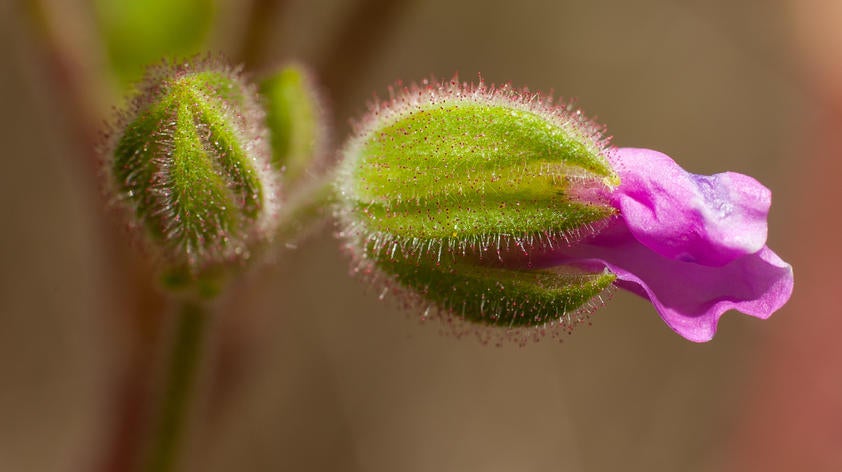
Documenting the rare roundleaf stork's bill in Baja California, México
The roundleaf stork's bill, California macrophylla, as its name implies, is only found in California’s Floristic Province, but on both sides of the US/MX border. This rare annual plant belongs to the Geranium family and there are only a few populations known from Baja California. It is strongly associated with clay soils, and may be found in clay lens habitats, where the clay is so thick, the shrink-swell actions of the soil in wet and dry periods break the roots of most plants and often make conditions unsuitable for the survival of any perennial plants.
Of the 67 cross-border rare plants that we are working to document and conserve, the roundleaf stork's bill could be the rarest. Last year we were able to locate a single individual and it was impossible to obtain a meaningful seed collection.
Last week, I visited a new population near the city of Ensenada, which was discovered and reported by Paula Pijoan. The site seems to be destined for construction and there are some houses nearby.
When I reached the population, the plants were already in flower and fruit; I was able to collect seeds from this important new occurrence. Every fruit has a maximum of 5 seeds, so we were careful not to over-collect. But since the fruits are highly dehiscent, the seeds fall off right after opening, therefore many of the plants had only one or two seeds per ripe fruit.
We calculate that there are between 300-400 individuals in this new site, and they are growing just beside a dirt road and future construction site, so it is of great importance that we continue monitoring this threatened species in the future.
In addition to its potential habitat loss, there’s a lot of competition with exotic invasive plants, mainly the red brome (Bromus rubens) and the common stork’s bill (Erodium cicutarium).
What's interesting is the way they seem to be influencing the population. Plants growing in the open area with low growing annuals only had between two to four fruits, while plants growing amongst more tall exotics had more than five fruits, and in some cases up to fifteen.
However, the high-density vegetation patches don't have as many roundleaf stork’s bill individuals as the more dry and sun-exposed areas.
So, there’s kind of a funny story for me here. When I first met the population, it wasn’t exactly what I was expecting. Normally the roundleaf stork’s bill has white flowers, but the flowers on this new population are pink, so at first sight looks very similar to the native filaree (Erodium texanum), which belongs to the same family.
After a closer look I could see that the roundleaf stork’s bill has highly glandular sepals, while the native filaree lacks the glands and only has soft hairy (tomentose) sepals. The roundleaf stork’s bill also lacked the five aborted stamens, which are characteristic of the filaree genus (Erodium).
Seed banking this rare species is important, and even more exciting is documenting variation and identifying distinguishing characters in this rare binational plant. There are a couple more historical occurrences in Baja California and our goal is to continue finding new or hidden populations before they disappear in order to aid for future conservation.













